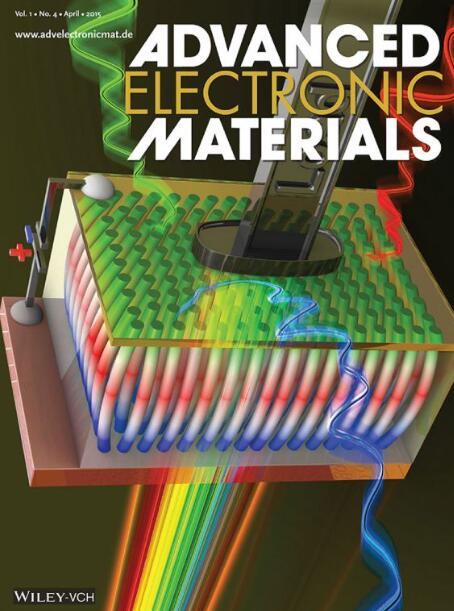Self-Aligned Heterojunction Gate Carbon Nanotube Phototransistors for Highly Sensitive Infrared Detection
IF 5.3
2区 材料科学
Q2 MATERIALS SCIENCE, MULTIDISCIPLINARY
引用次数: 0
Abstract
Heterojunction-gated (HG) phototransistors have shown exceptional performance in weak-light infrared detection due to their internal gain mechanism and the opto-electric decoupling design. However, huge room is remained on optimizing device structure to further improve the performance, integrated density and yield. In this work, a carbon nanotube (CNT) film-based phototransistor is fabricated with a self-aligned gate consisting of a zinc oxide (ZnO) film/PbS colloidal quantum dot heterojunction. This fabrication process involves a standard lift-off method to form an atomic-layer-deposited dielectric and a self-aligned sputtered ZnO film, which fully covers the CNT network channel to provide the maximum light absorption area. The resulting device demonstrates a high responsivity of 2.9 × 105 A W−1, a specific detectivity of 9.6 × 1013 Jones, and an ultraweak detectable intensity of 0.8 nW cm−2 at 1300 nm illumination, all at room temperature. The self-aligned HG phototransistor presents infrared photodetection performance comparable to non-self-aligned one, which typically require electron-beam lithography or high-precision lithography. This study can be insightful in developing high-performance, easily manufacturable CNT-based infrared detectors and high-resolution imaging applications.

用于高灵敏度红外探测的自对准异质结栅极碳纳米管光电晶体管
异质结门控(HG)光电晶体管由于其内部增益机制和光电去耦设计而在弱红外探测中表现出优异的性能。但在优化器件结构、进一步提高性能、集成密度和成品率方面仍有很大的空间。在这项工作中,用氧化锌(ZnO)薄膜/PbS胶体量子点异质结组成的自对准栅极制备了基于碳纳米管(CNT)薄膜的光电晶体管。该制造工艺包括标准的升空方法,形成原子层沉积电介质和自对准溅射ZnO薄膜,其完全覆盖碳纳米管网络通道以提供最大的光吸收面积。该器件在室温下具有2.9 × 105 a W−1的高响应度,9.6 × 1013 Jones的比检出率,以及1300 nm光照下0.8 nW cm−2的超弱探测强度。自对准汞柱光电晶体管具有与非自对准汞柱光电晶体管相当的红外光电探测性能,而非自对准汞柱光电晶体管通常需要电子束光刻或高精度光刻。这项研究对于开发高性能、易于制造的基于碳纳米管的红外探测器和高分辨率成像应用具有重要意义。
本文章由计算机程序翻译,如有差异,请以英文原文为准。
求助全文
约1分钟内获得全文
求助全文
来源期刊

Advanced Electronic Materials
NANOSCIENCE & NANOTECHNOLOGYMATERIALS SCIE-MATERIALS SCIENCE, MULTIDISCIPLINARY
CiteScore
11.00
自引率
3.20%
发文量
433
期刊介绍:
Advanced Electronic Materials is an interdisciplinary forum for peer-reviewed, high-quality, high-impact research in the fields of materials science, physics, and engineering of electronic and magnetic materials. It includes research on physics and physical properties of electronic and magnetic materials, spintronics, electronics, device physics and engineering, micro- and nano-electromechanical systems, and organic electronics, in addition to fundamental research.
 求助内容:
求助内容: 应助结果提醒方式:
应助结果提醒方式:


